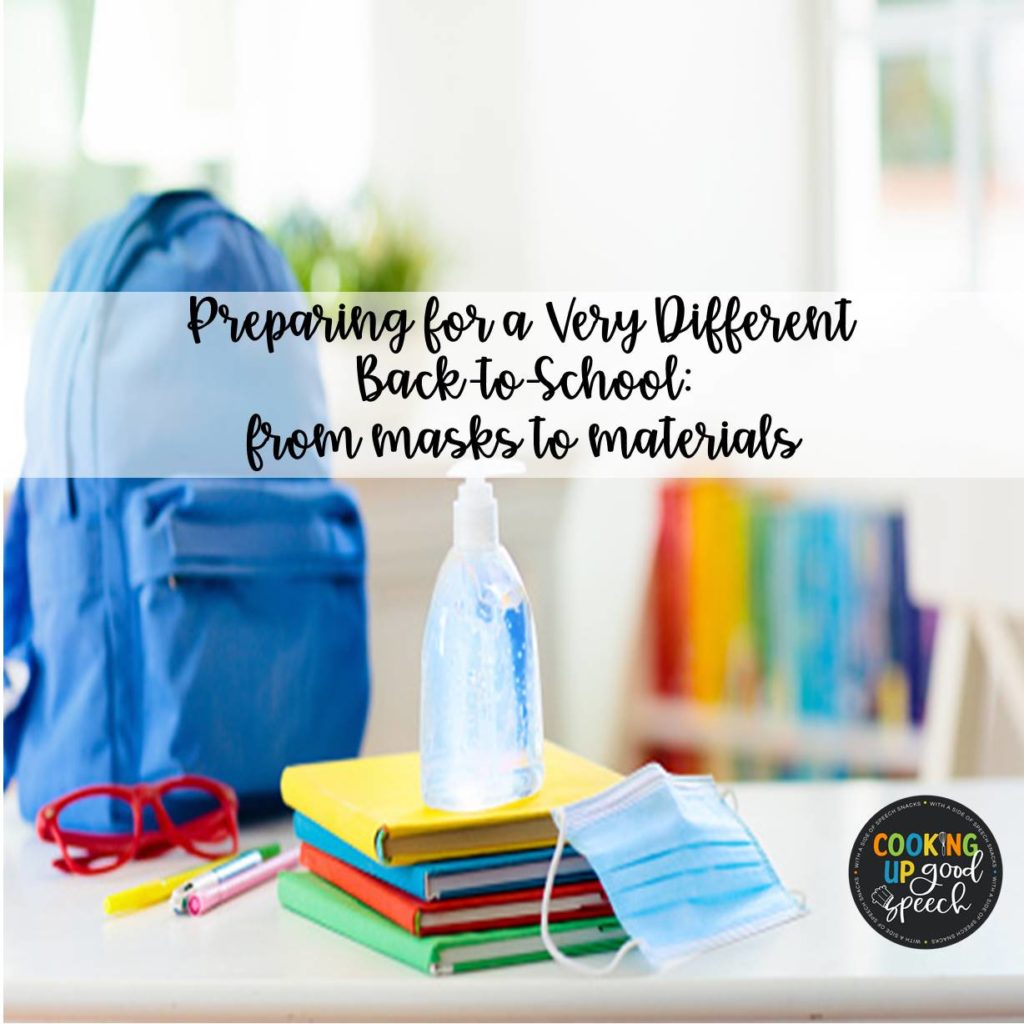
This school year will certainly be very different from any that we have ever experienced before. You may be going back in-person, others may be continuing with the remote learning model, while many are preparing for a hybrid model. As SLPs, many of the materials that we use are interactive. We use task cards and other manipulatives that our students can sort in a pile and sequence in order. We use game boards and playing pieces as a motivator and reward system. We point, shuffle, exchange and touch so many papers, materials, and games, without ever giving it a second thought—until now. Now we must be very careful by social distancing, by wearing a mask to protect ourselves and others, and by eliminating frequent contact and interaction with items that we would normally use, and of course, hand washing and hand sanitizers are a given.
They say necessity is the mother of invention. Educators are a very creative group! So, despite some of the obstacles, we will find new ways to get the job done, and done well…(all while wearing a piece of cloth on our faces that may present some challenges to our ability to clearly communicate with our students). Wow, we really are superheroes!
Part one of this post covers some information regarding my experience and opinion about face masks and which ones I have found most effective for me so far. (I’ve already had a couple of weeks to test them out this summer in my ESY program.) Part 2 covers some safe and creative ideas for utilizing your materials.
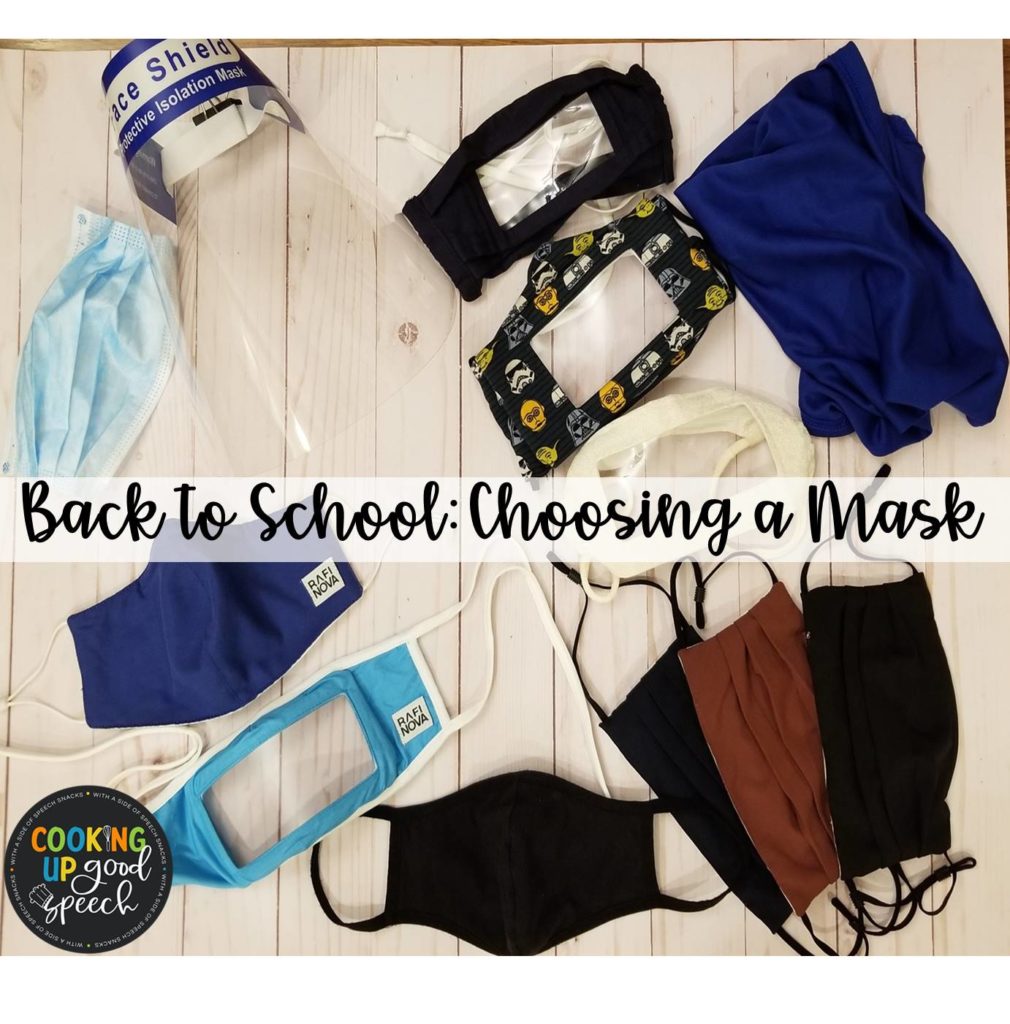
I. The MASKS:
As we all know, wearing a mask, along with social distancing, is of paramount importance in preventing the spread of coronavirus. I’ve tried many masks —washable cotton masks, disposable surgical masks, clear window masks, the neck gator, the face shield, the ear loop style, the tie behind the head style…..so many masks! (A few months ago, I would have never thought that I would be discussing this topic!) Many of the masks I have researched and tested out have disappointed; some were better than others for comfort, breathability, and clarity of communication.
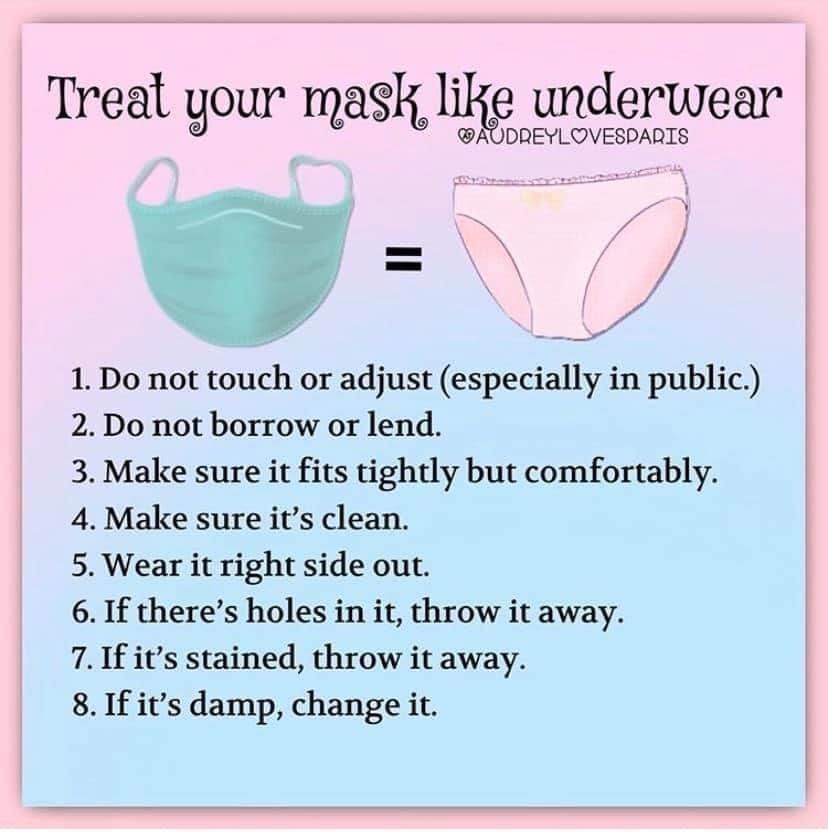
1–Smile Masks: Etsy has a multitude of sellers making these masks, so I started there. Sadly, I wasn’t impressed by the ones I tried. Most of the clear panel “smile masks” were boxy, didn’t comfortably rest on my face, and many had gaps on the sides and around my nose or rubbed under my chin. When you purchase a mask of any type, you should test it out by leaving it on for a lengthy period of time while having conversations, and going about your daily routine. Although I love the idea of wearing the clear panel mask, there are also some concerns. First the positive— my students will have a clear view of my mouth and it will be easier for them to watch me form words, as well as see me smiling at them. The negative–One of the concerns regarding clear panels masks is that the stitching around the plastic could potentially allow aerosol droplets in, exposing the person wearing it to COVID. Wearing a face shield with the mask may keep you better protected.
2–The neck gator: Personally, it’s not my favorite choice. It falls off my face and I don’t feel very well protected because the material seems thin, however, if you double it up it will offer a second layer, which seems a bit safer. Some people find the neck gator very comfortable and easy to breathe in.
3–The face shield: It is not advisable that you wear it alone, however, I am considering wearing it along with a smile mask. A face shield with a foam cushion across the forehead will stand away from your face and feel less claustrophobic than a shield that lays directly on your skin. And what about those of you who wear glasses and can’t wear the shield because the strap gets in the way, or maybe you’re concerned about getting headaches from the band part sitting across your forehead—there’s a company who solved this issue—ZShield wraps around the neck. Seems like a good solution, however, I would personally not feel comfortable wearing this without a mask as well! According to the CDC: ” It is not known if face shields provide any benefit as source control to protect others from the spray of respiratory particles. CDC does not recommend the use of face shields for normal everyday activities or as a substitute for masks. Some people may choose to use a face shield when sustained close contact with other people is expected. If face shields are used without a mask, they should wrap around the sides of the wearer’s face and extend to below the chin. Disposable face shields should only be worn for a single-use. Reusable face shields should be cleaned and disinfected after each use. “
4- My favorites: After trying out many different options, my favorite mask (both solid cotton and smile mask), for comfort and function was the Rafi Nova mask, which was designed by a speech pathologist(no surprise there)! Plus the company is family-owned and I love their mission. ( I was not compensated by Rafi Nova in any way. This review is just my honest opinion based on personal experience.) The company was recently featured in USA Today for its comfortable design. I also purchased Athleta cotton masks–you get five masks for $30. These are super comfortable and I rotate these with my Rafi mask.
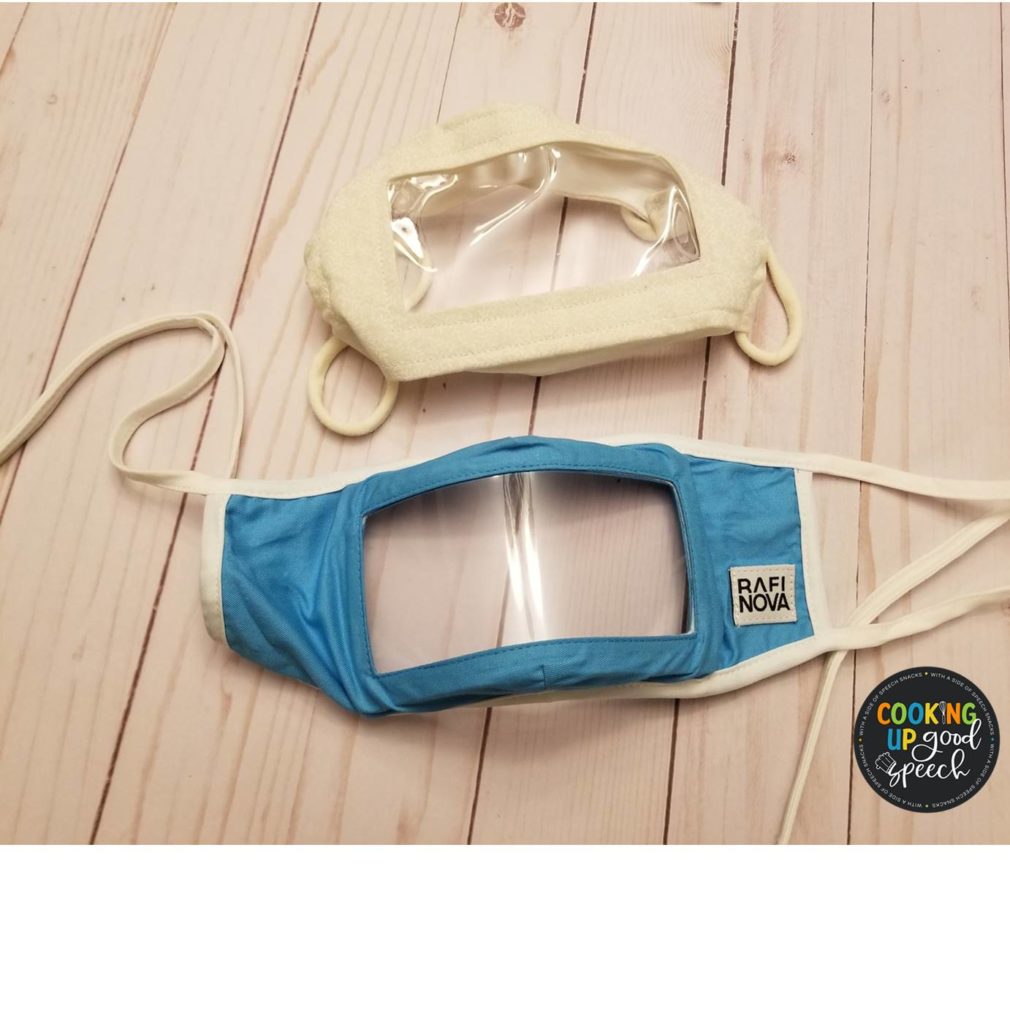
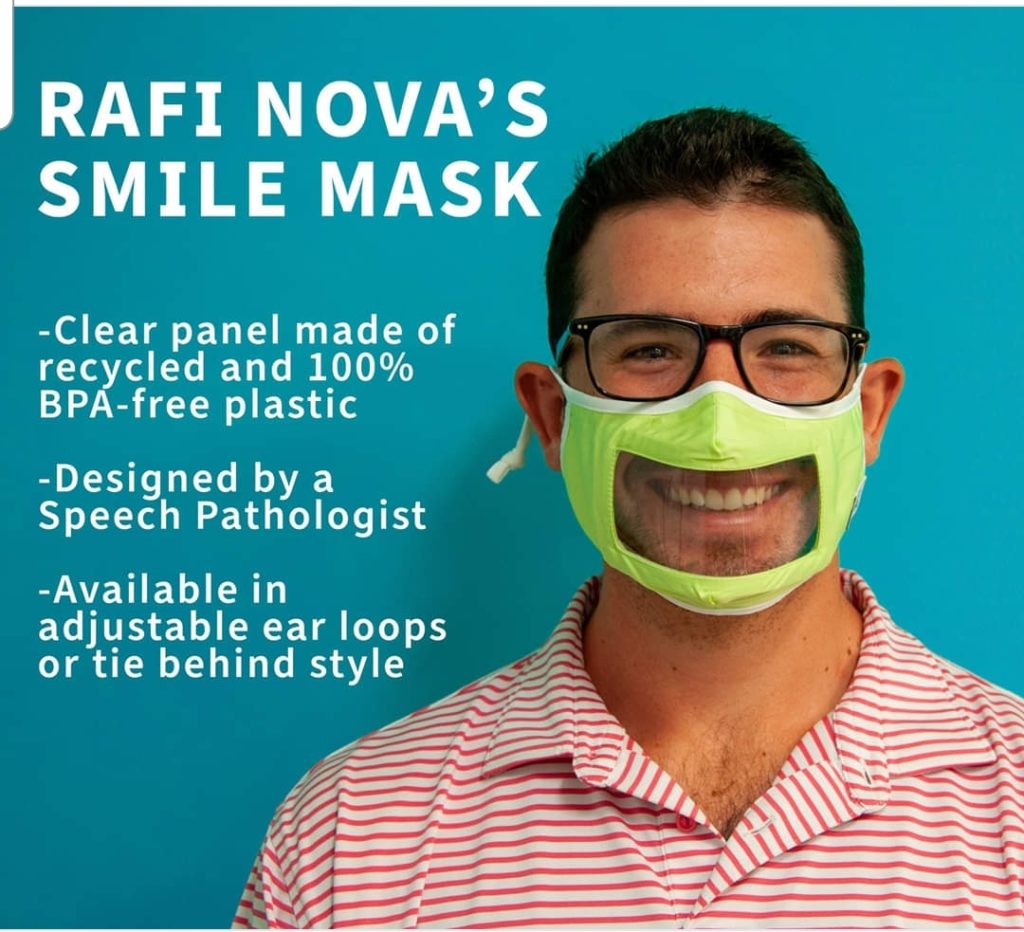
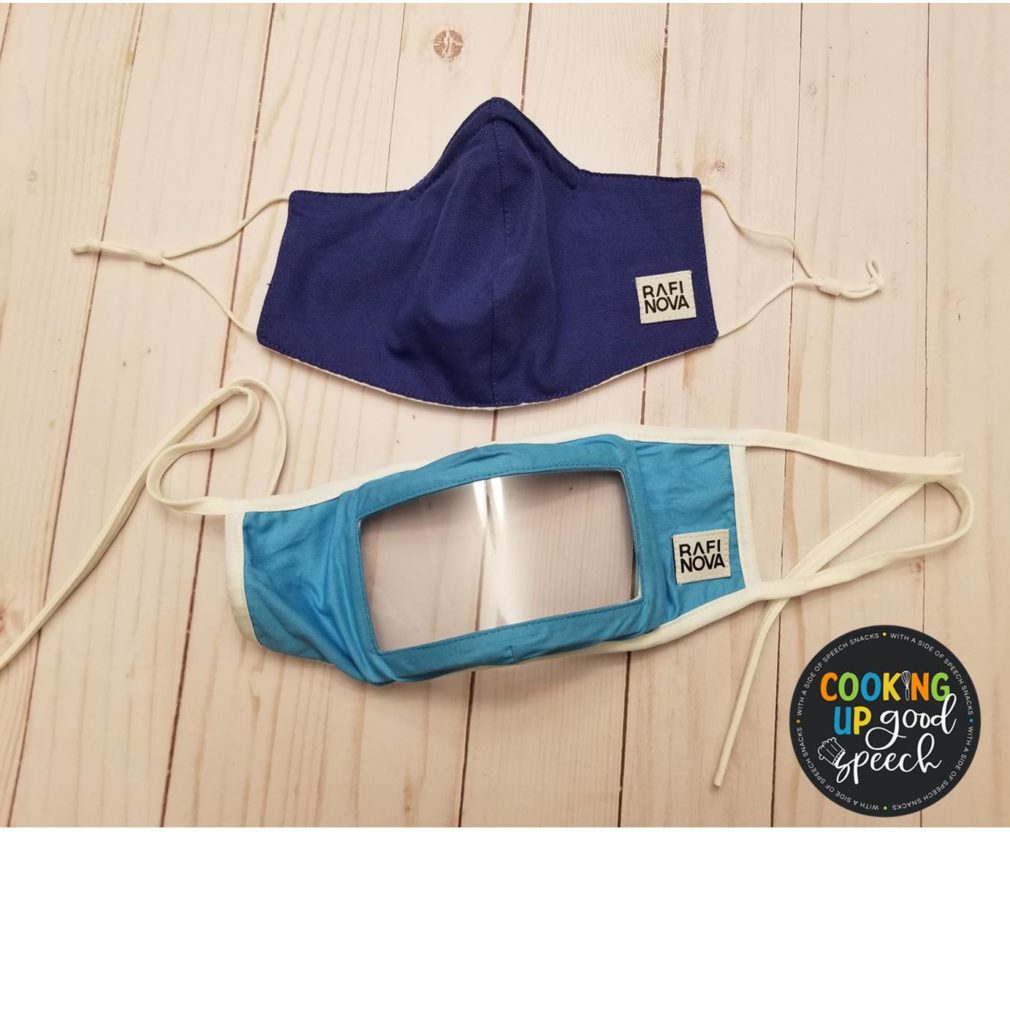
One of the main issues with clear panel smile masks is that they tend to fog up easily. There are several ways to address this: 1- rubbing a little dish detergent across the panel, which forms a protective film to stop fogging, 2- rubbing a clear, thin layer of toothpaste across the panel 3- using an anti-fog spray. I have tried all three methods. They all work to some degree, however, you will need to reapply after a 2-3 hour period, in my experience. And there’s a company that came up with a mask that addresses the fogging issue, made with an anit-fog plastic. Although I have not tried these out yet, I know they are popular because they sell out very quickly so keep checking back for availability from Downtown Kids Therapy.
The name of this anti-fog spray cracks me up! (It’s called Cat Crap). Although I have heard people say it works great!
The MATERIALS:
**You can find many of the suggested materials in my SpeechSnacks Amazon store here!
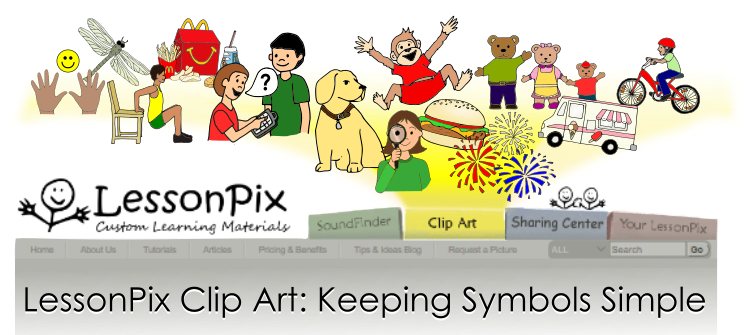
1–Lesson Pix:
Using your go-to game boards may be a challenge due to social distancing and the need to avoid high-touch situations. Interacting with the game board, playing pieces, playing cards, etc. may not be an option for now. Instead, create game boards, card decks, and other activities with the help of LessonPix, then print out a copy for each of your students and they will have their own. If you’re lucky enough to have a school that will pay for the yearly membership, it will be well worth the investment!
2- Virtual Dice and Spinners!
Here is a creative way to still incorporate an interactive element into your in-person lessons (also great for remote learning with screen sharing feature) while remaining low-contact with your game pieces. Use this feature on your own laptop for students to view, on their laptop so they can control the spinner and dice roll or even on a SmartBoard! Customize the number of sides to your die, the number of spinner sections, and even the sound that your spinner makes. Add words, numbers, or visuals to the spinner too. I will be getting plenty of use from these two virtual motivators!
3-Plastic coverings

Press n’ Seal clear food wrap, plastic sheet protectors and clear dry erase pockets are some options for covering your student’s worksheets and game board printouts. Use a dry-erase marker to write on and wipe off of the plastic surfaces. Press ‘n Seal wrap can also be used to cover your favorite, large go-to game boards. Wrap the cardboard and press the edges together to form a seal. When the session is over, unwrap and discard the plastic wrap.


4- Plastic picture frame

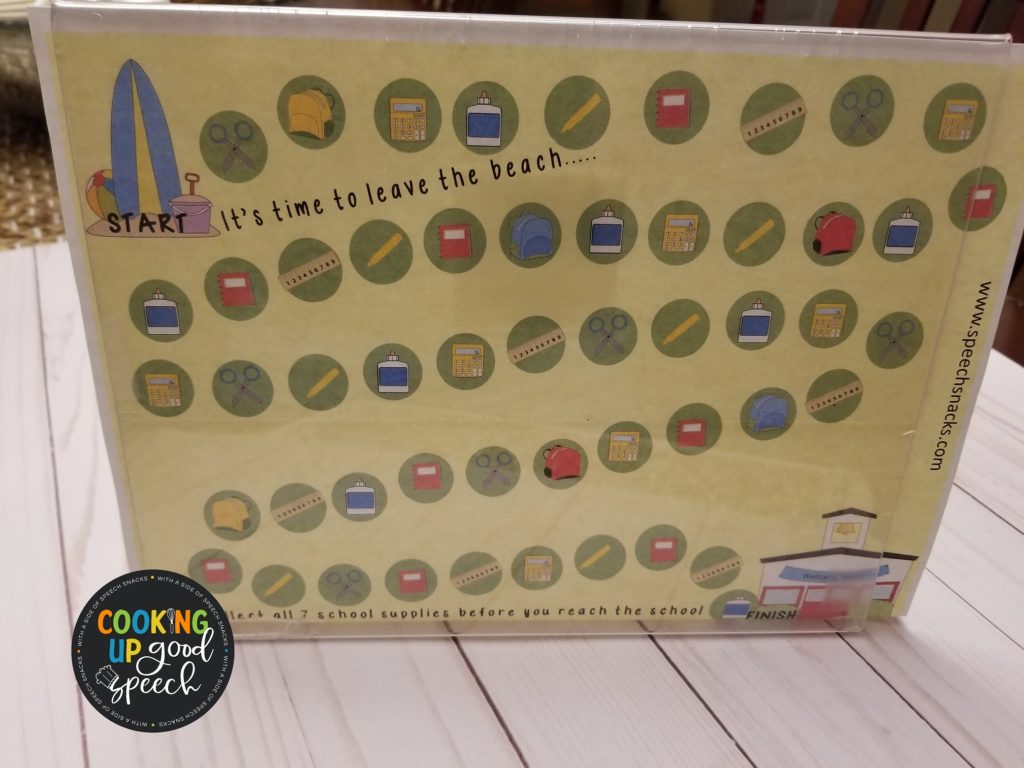
Here’s another way to display a worksheet or game board. It would be a fun way to play a barrier game or guessing game when you don’t want anyone else to see what you’re looking at. Dry erase markers work great with these!
5- Low-touch tools: salad tongs and ice cream scoops
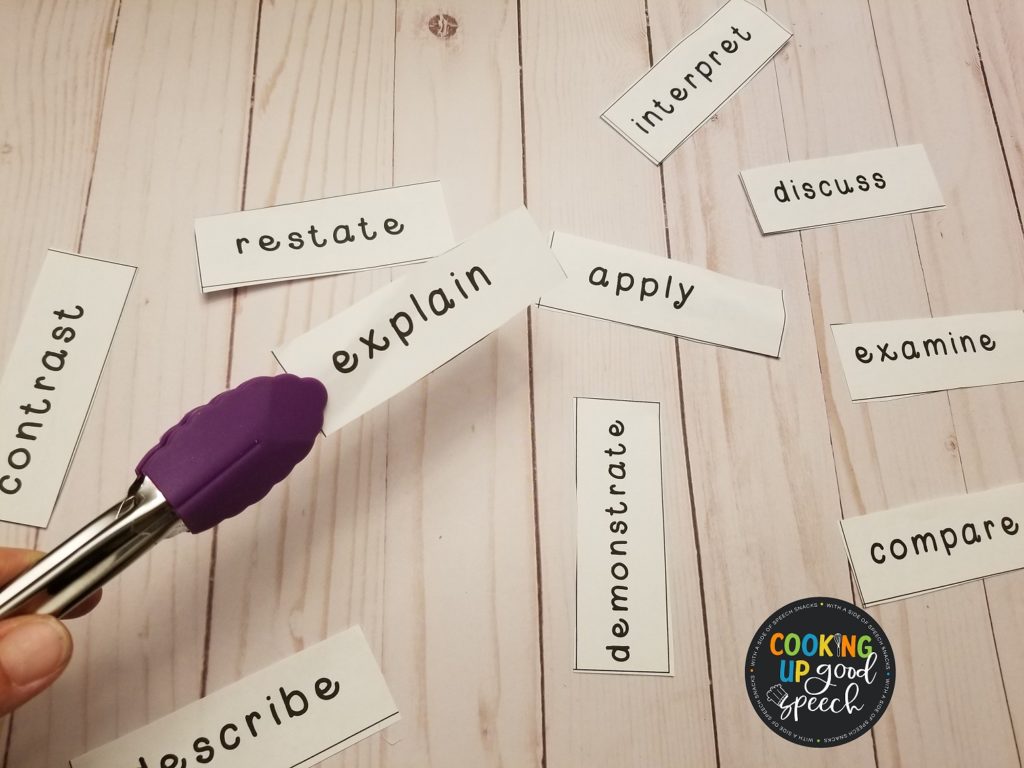
If you get a little creative, you will find that there are some household items that make good tools in the therapy room. Students can use salad tongs (with rubber tips for better grip) to pick up manipulatives, game pieces, cards, papers, etc. Plus, it will help strengthen fine motor skills. The tongs may be a fun way to keep your students attending and motivated. Salad tongs can easily be sanitized at the end of each session with an anti-bacterial wipe or spray cleaner.
Like the tongs, ice cream scoopers are another creative way to avoid direct contact with therapy materials. Use a scooper to pick up objects in sensory bins, or for picking up styrofoam or cotton balls. I have used this idea already with an ice cream game I created. Students collected the scoops in large plastic cups while playing a describing game. You can find the idea on my blog here!
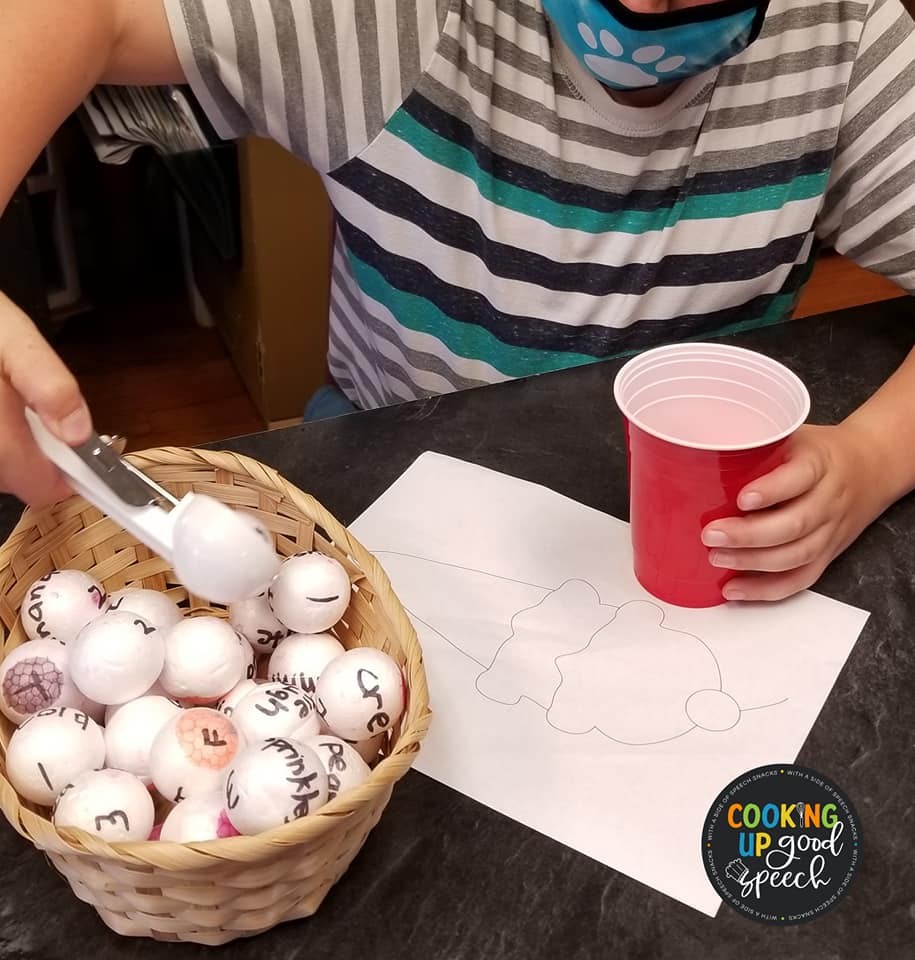
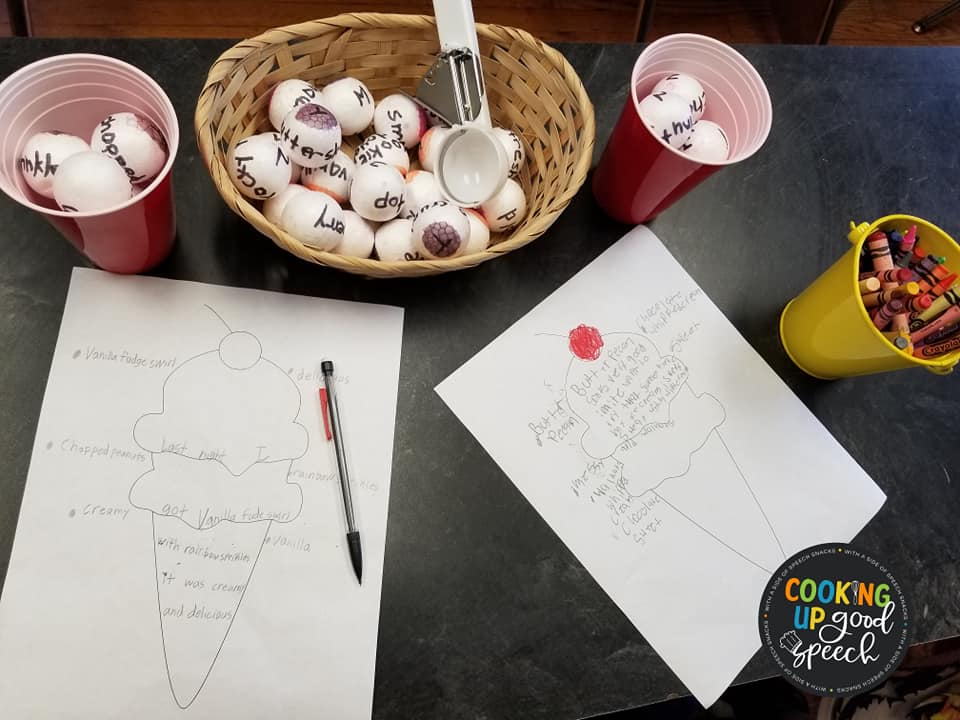
6- Word swatters and plastic pointer sticks
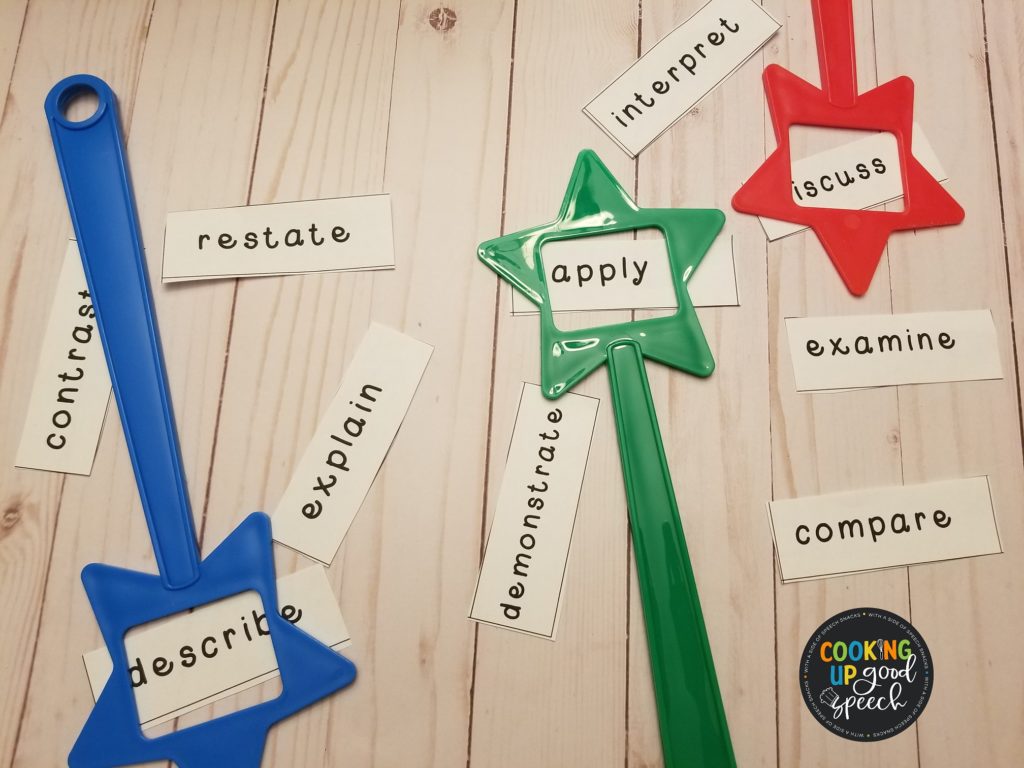
Here are two other ideas that are fun and help avoid high-contact. Students (and the teacher) can use pointer sticks (these are 12 inches in length) to tap on materials, like game cards, when presented with choices or details within a picture or on a page containing visuals, words, letters, etc. Word swatters are a fun way to highlight correct responses by placing the open window of the swatter over correct choices and can be used by both teacher and student. Again, all of these tools should be wiped down with sanitizer after use.
(I found Word Swatters in my local Dollar Tree, so check these out there before you spend $$$ on Amazon.)
7- TpT product from my store using Plastic slider storage bags
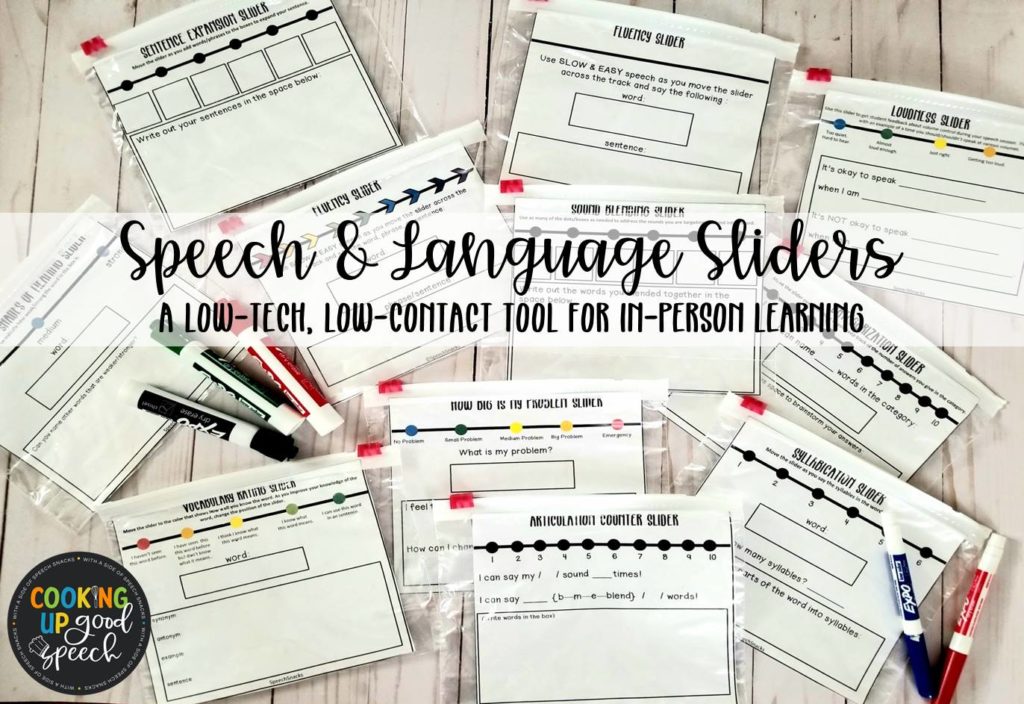
Speech & Language Sliders allow students of all age/grade/ ability levels to work on their communication goals, in an interactive fashion, while keeping their materials for their personal use only. This low-tech tool requires one-quart plastic storage bags with slider closures that can be purchased in large quantities at minimal cost (at the dollar store, supermarket or online). Students will also need dry erase markers (which can be sanitized after use, if students do not have their own supply.) SLPs/teachers can customize the sliders with any of the materials they already own and while students write responses directly onto the plastic bag.

Speech & Language Sliders are made to address the following areas: articulation, syllabification, sentence expansion, categorization, vocabulary, volume control, emotional regulation, and fluency. Students can use the slider to 1- keep count of the number of trials, utterances, and verbal responses, 2- as a rating scale, 3- to assist with expanding utterances, 4- to provide a visual when blending, pacing or segmenting.
Write on the outside of the plastic bag with a dry erase marker and wipe off to use over and over. Students can be awarded plastic chips, stickers, mini-erasers, etc. and stored in the bag.
Each student keeps their own plastic bags, eliminating concerns about high-touch situations and reuse them throughout the school year. If your students have speech folders, the bags can be stored inside the pocket of a folder.
Also included: open-ended data collection sheets for each of the skills addressed. Cut the sheets in half and use one per student or one per group, you decide how it will work best for you.
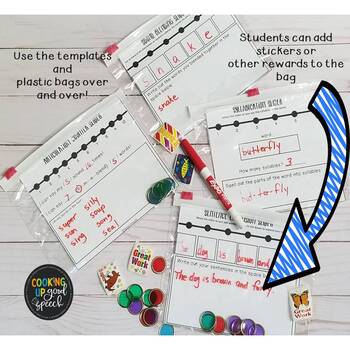
If you are looking for more ways to protect your materials, and other ideas to use in your therapy room, visit the link to my SpeechSnacks Amazon store.
How are you rethinking the way you use your materials this school year? I hope whatever way you may be returning, you stay safe, healthy, and of course keep doing the amazing job you have always done, regardless of the challenges!
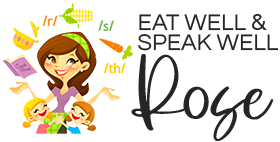










Leave a Reply